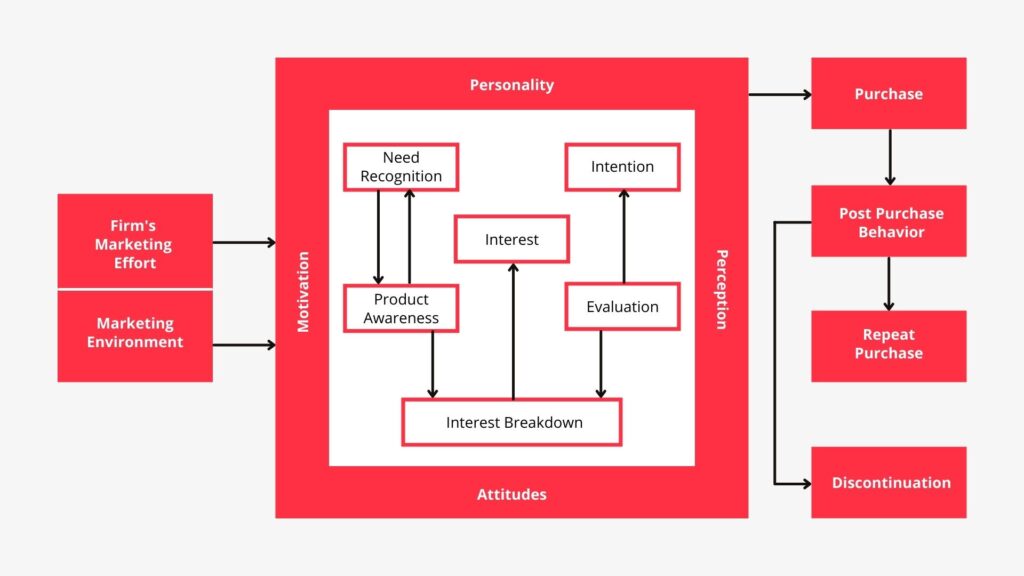What is the Pavlovian learning model of consumer behavior?
In the Pavlovian learning model, humans learn from associations between stimuli and their effects. Through the repeated association of a stimulus with some effect (e.g., reward), an automatic response occurs as a conditioned reflex that is designed to promote responses associated with those same positive or negative indications. Unlike the James-Lange theory, which marked reward for certain overt behaviors through an interaction of physiological processes with the conscious will to act. Under this psychoanalytic model of behavior, the gratification was tied only to successful performance in providing pleasure. The Pavlovian theory marks avoidance via relief from punishment through the association of a stimulus with tangible pleasure or tangible pain.
History
The Pavlovian model was formed from an experiment conducted by the Russian physiologist, Ivan Pavlov between 1904 and 1910. Researchers at that time did not know how to elicit behavioral responses in human subjects, but rather trained dogs to indicate when they received food by pulling a chain attached to their forepaws or tails. As the experiments progressed, Pavlov noticed that subjects react more frequently with increased stimuli which are associated with previous rewards. He also observed how he could predict his dog’s actions after he had fed them for fifteen consecutive sessions.
As the classical conditioning experiments continued, after extended training of between sixty-five to ninety-three trials, Pavlov encountered a suggestion that his dog’s reactions could be triggered through association. He then conducted tests with other animals where he timed how quickly they would react after a sound was played, and found they would respond more quickly if the same signal arrived on successive trials.
Once Pavlov had established that his conditioned reactions could be triggered through association with rewards he continued to observe how those responses were now linked from one stimulus-related response to another in the form of behavior. He subsequently conducted tests in response to his animal subjects that demonstrated that when he made a favorable sound or presentation before them they would respond more vigorously than if no stimulus was delivered. This then prompted him to investigate how this interconnection between stimuli could be established improved based on the pairing of rewards.
He conducted his study again with a dog to see if it was possible for them to associate two stimuli when one occurred after another. In these experiments, he placed the subject in an enclosure and set up a sound that would occur whenever food or water became available. After a period of time and after several pairings his dog could associate the stimulus with having food or water. This was eventually accepted as Pavlovian conditioning because it demonstrated how the association between stimuli mediated reactions.
Components of Learning Model
According to this model, learning is considered as a process that modifies the memory by which behaviors are linked with stimuli and can therefore be induced. First, it focuses on how very basic aspects of learning such as deprivation-reinstatement effects take place once a behavior has been conditioned to respond to certain conditions or it is initially started. As soon as there is a certain behavior performed in the presence of one stimulus but not others, for example when food or water are presented to an experimenter inducing positive reinforcement.
First, this hypothesis illustrates that association takes place amongst various induced functions through which response behaviors are produced after having been conditioned to respond whenever they get them along with one or several positive reinforcement treatments such as the matching of cereal and milk after breakfast, this was because there is a dog receptiveness towards learning. Second explains how inhibition occurs when parts of conditioned response do not occur together due to incompatible stimulus properties, serving, therefore, causing certain behaviors to not be made, like taking out the food after hearing an unpleasant tone which received positive reinforcement for this action. The learning process consists of drive, drives, and reinforcement.

Drive
It refers to the internal stimuli which propel the action from the subject. It is the relation between the subject and its behavior. It has psychological, biological, physical bases which provide us with different characteristics of response behaviors. Each drive consists of several subcomponents corresponding to each stage of the learning process that educates stimulus-effect association behavior or responding through these states.
Drives
Consists of the responses formed after stimulus-induced learning. Has a great influence on response behaviors due to its innate biological characteristics as well as from those which are either influenced by other drives, for example, there is a stronger hunger drive when food or drink has been absent. There are two types of cues namely:
- Triggering Cues: Refers to the cues that activate the decision process of the subject.
- Non-Triggering Cues: These cues are part of the process but do not influence the decision process.
Reinforcement
Reinforcement occurs when there is a positive correlation between stimulus and effect which has to do with change, improvement, or neither because the learner does not realize it. When Reinforcers are associated with behavior after an association frame is established through time, they come in two types:
Primary reinforcement: Those that are provided directly to the learner after various occasions. These positive conditioning signals occur when there are stimulus-reinforcer sequences, which means that motivating emotions or characteristics arise depending on stimuli associated with primary reinforcers because these indicate reinforcement. Secondary Reinforcement: It occurs when an individual is provided with reinforcement after displaying behaviors that are already reinforced. Secondary Reinforcement may be explained as a result of the “vicious circle” in which certain behaviors are triggered by relational events. In this case, reinforcement signals lead to becoming reinforced and thus more likely to follow similar behavior or continue responding differently from their original natural patterns of responses so that they have been reorganized.
Conclusion
This model of consumer behavior has been widely accepted by the community owing to its completeness in nature and the empirical evidence backing it up. The Pavlovian learning model is a powerful tool that can be used to understand how consumers make purchasing decisions. This blog explains the components of the learning model and why they are important in making purchasing decisions. Read our other blogs on consumer behavior to learn about other models that evolved around the same time.
